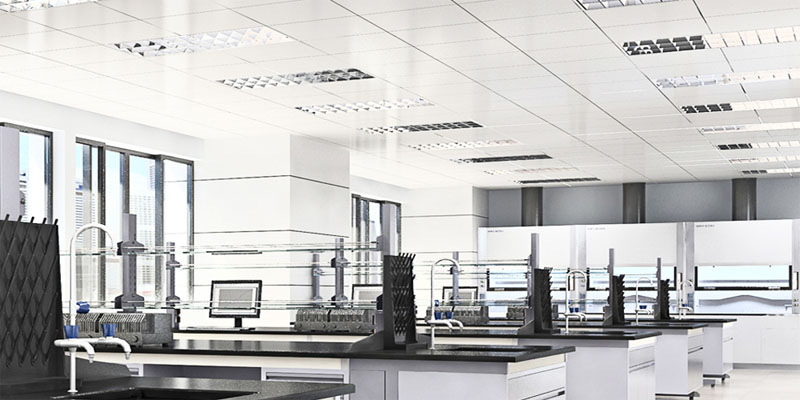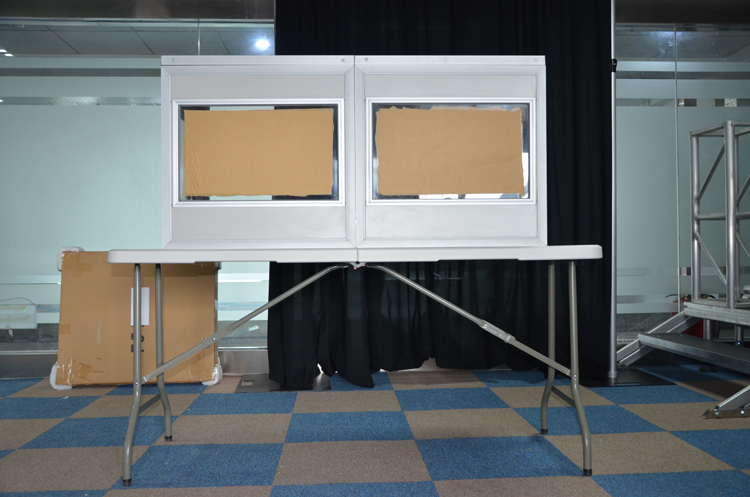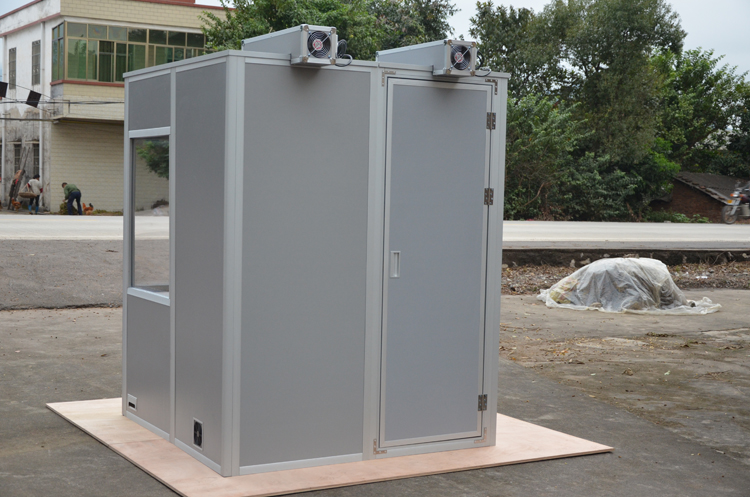There are basically two different types of interpreting booths you can use for your conference: Tabletop interpreting booths and full-size interpreting booths.
Tabletop booths, as their name suggests, sit atop a table — any reasonably sturdy table will work. The interpreter sits at the table, with the upper body and interpreting equipment inside the booth.
However, the booth is not completely enclosed — it’s open in the back. Therefore it is not completely soundproof. On the upside, this also means it is small and easily transportable, and it can be set up and operated by a single person.
Full-size interpreting booths are standalone enclosures that come with the works: eight walls, two ceilings, its own door and even its own ventilation system.
The interpreter(s) sit within the soundproof booth at a table (you’ll need to keep a spare at the venue available) with their equipment and work there throughout the conference. It’s usually recommended to have an audio technician available outside the booth to assist with any technical issues that may arise.
At a minimum, full-size booths are big enough to fit a pair of interpreters, but larger booths can accommodate as many as four if need be. Because of their size, they come in many parts, are harder to transport than tabletop booths and require more than one person to assemble and operate them.
Whichever type of interpreting booth is employed, the same audio equipment will be used by the interpreter. So be sure to consider the differences between booths when deciding which one will best serve the needs of your conference.



